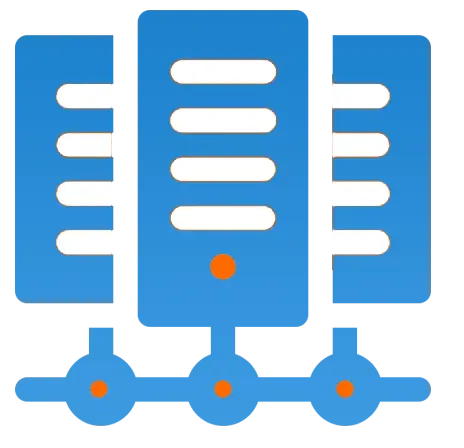Get 69% Off on Cloud Hosting : Claim Your Offer Now!
- Products
-
Compute
Compute
- Predefined TemplatesChoose from a library of predefined templates to deploy virtual machines!
- Custom TemplatesUse Cyfuture Cloud custom templates to create new VMs in a cloud computing environment
- Spot Machines/ Machines on Flex ModelAffordable compute instances suitable for batch jobs and fault-tolerant workloads.
- Shielded ComputingProtect enterprise workloads from threats like remote attacks, privilege escalation, and malicious insiders with Shielded Computing
- GPU CloudGet access to graphics processing units (GPUs) through a Cyfuture cloud infrastructure
- vAppsHost applications and services, or create a test or development environment with Cyfuture Cloud vApps, powered by VMware
- Serverless ComputingNo need to worry about provisioning or managing servers, switch to Serverless Computing with Cyfuture Cloud
- HPCHigh-Performance Computing
- BaremetalBare metal refers to a type of cloud computing service that provides access to dedicated physical servers, rather than virtualized servers.
-
Storage
Storage
- Standard StorageGet access to low-latency access to data and a high level of reliability with Cyfuture Cloud standard storage service
- Nearline StorageStore data at a lower cost without compromising on the level of availability with Nearline
- Coldline StorageStore infrequently used data at low cost with Cyfuture Cloud coldline storage
- Archival StorageStore data in a long-term, durable manner with Cyfuture Cloud archival storage service
-
Database
Database
- MS SQLStore and manage a wide range of applications with Cyfuture Cloud MS SQL
- MariaDBStore and manage data with the cloud with enhanced speed and reliability
- MongoDBNow, store and manage large amounts of data in the cloud with Cyfuture Cloud MongoDB
- Redis CacheStore and retrieve large amounts of data quickly with Cyfuture Cloud Redis Cache
-
Automation
Automation
-
Containers
Containers
- KubernetesNow deploy and manage your applications more efficiently and effectively with the Cyfuture Cloud Kubernetes service
- MicroservicesDesign a cloud application that is multilingual, easily scalable, easy to maintain and deploy, highly available, and minimizes failures using Cyfuture Cloud microservices
-
Operations
Operations
- Real-time Monitoring & Logging ServicesMonitor & track the performance of your applications with real-time monitoring & logging services offered by Cyfuture Cloud
- Infra-maintenance & OptimizationEnsure that your organization is functioning properly with Cyfuture Cloud
- Application Performance ServiceOptimize the performance of your applications over cloud with us
- Database Performance ServiceOptimize the performance of databases over the cloud with us
- Security Managed ServiceProtect your systems and data from security threats with us!
- Back-up As a ServiceStore and manage backups of data in the cloud with Cyfuture Cloud Backup as a Service
- Data Back-up & RestoreStore and manage backups of your data in the cloud with us
- Remote Back-upStore and manage backups in the cloud with remote backup service with Cyfuture Cloud
- Disaster RecoveryStore copies of your data and applications in the cloud and use them to recover in the event of a disaster with the disaster recovery service offered by us
-
Networking
Networking
- Load BalancerEnsure that applications deployed across cloud environments are available, secure, and responsive with an easy, modern approach to load balancing
- Virtual Data CenterNo need to build and maintain a physical data center. It’s time for the virtual data center
- Private LinkPrivate Link is a service offered by Cyfuture Cloud that enables businesses to securely connect their on-premises network to Cyfuture Cloud's network over a private network connection
- Private CircuitGain a high level of security and privacy with private circuits
- VPN GatewaySecurely connect your on-premises network to our network over the internet with VPN Gateway
- CDNGet high availability and performance by distributing the service spatially relative to end users with CDN
-
Media
-
Analytics
Analytics
-
Security
Security
-
Network Firewall
- DNATTranslate destination IP address when connecting from public IP address to a private IP address with DNAT
- SNATWith SNAT, allow traffic from a private network to go to the internet
- WAFProtect your applications from any malicious activity with Cyfuture Cloud WAF service
- DDoSSave your organization from DoSS attacks with Cyfuture Cloud
- IPS/ IDSMonitor and prevent your cloud-based network & infrastructure with IPS/ IDS service by Cyfuture Cloud
- Anti-Virus & Anti-MalwareProtect your cloud-based network & infrastructure with antivirus and antimalware services by Cyfuture Cloud
- Threat EmulationTest the effectiveness of cloud security system with Cyfuture Cloud threat emulation service
- SIEM & SOARMonitor and respond to security threats with SIEM & SOAR services offered by Cyfuture Cloud
- Multi-Factor AuthenticationNow provide an additional layer of security to prevent unauthorized users from accessing your cloud account, even when the password has been stolen!
- SSLSecure data transmission over web browsers with SSL service offered by Cyfuture Cloud
- Threat Detection/ Zero DayThreat detection and zero-day protection are security features that are offered by Cyfuture Cloud as a part of its security offerings
- Vulnerability AssesmentIdentify and analyze vulnerabilities and weaknesses with the Vulnerability Assessment service offered by Cyfuture Cloud
- Penetration TestingIdentify and analyze vulnerabilities and weaknesses with the Penetration Testing service offered by Cyfuture Cloud
- Cloud Key ManagementSecure storage, management, and use of cryptographic keys within a cloud environment with Cloud Key Management
- Cloud Security Posture Management serviceWith Cyfuture Cloud, you get continuous cloud security improvements and adaptations to reduce the chances of successful attacks
- Managed HSMProtect sensitive data and meet regulatory requirements for secure data storage and processing.
- Zero TrustEnsure complete security of network connections and devices over the cloud with Zero Trust Service
- IdentityManage and control access to their network resources and applications for your business with Identity service by Cyfuture Cloud
-
-
Compute
- Solutions
-
Solutions
Solutions
-
 Cloud
Hosting
Cloud
Hosting
-
 VPS
Hosting
VPS
Hosting
-
GPU Cloud
-
 Dedicated
Server
Dedicated
Server
-
 Server
Colocation
Server
Colocation
-
 Backup as a Service
Backup as a Service
-
 CDN
Network
CDN
Network
-
 Window
Cloud Hosting
Window
Cloud Hosting
-
 Linux
Cloud Hosting
Linux
Cloud Hosting
-
Managed Cloud Service
-
Storage as a Service
-
 VMware
Public Cloud
VMware
Public Cloud
-
 Multi-Cloud
Hosting
Multi-Cloud
Hosting
-
 Cloud
Server Hosting
Cloud
Server Hosting
-
 Bare
Metal Server
Bare
Metal Server
-
 Virtual
Machine
Virtual
Machine
-
 Magento
Hosting
Magento
Hosting
-
Remote Backup
-
 DevOps
DevOps
-
 Kubernetes
Kubernetes
-
 Cloud
Storage
Cloud
Storage
-
NVMe Hosting
-
 DR
as s Service
DR
as s Service
-
-
Solutions
- Marketplace
- Pricing
- Resources
- Resources
-
By Product
Use Cases
-
By Industry
- Company
-
Company
Company
-
Company
Importance of PAAS in Cloud Computing
Table of Contents
In digitalization, several services are associated with the cloud computing models and PaaS (Platform as a Service) is one of them. Besides, IaaS (Infrastructure as a Service) and SaaS (Software as a Service) are also part of cloud models. Although they enable control over the cloud computing infrastructure.
IaaS, PaaS, and SaaS are the three fundamental service categories that cloud computing companies offer. However, a cloud service provider is not required to be a PaaS provider.
Apart from all these models, there are some other interesting acronyms in this area, like:
- FaaS (Function as a Service)
- BaaS (Backend as a Service)
- MBaaS (Mobile Backed as a Service)
- EaaS (Everything as a Service)
Why then should we focus on PaaS? Well, PaaS (Platform as a Service) in cloud computing plays an essential role and it is also ever-increasing. This is because it is the significance of cloud infrastructure, cloud migration, and cloud services, in general. However, PaaS offers several core gains to the enterprises that use it as well as the software development environment that it is well worth mentioning.
Well, in this blog, we enlighten the core importance of PaaS in cloud computing. But, before that, let’s begin with the basics of understanding the term PaaS. So, let’s come to the points directly.
Understanding the Term PaaS
Platform as a Service (PaaS) is a paradigm for cloud computing services. Furthermore, it offers an adaptable, scalable cloud platform for the creation, distribution, operation, and management of apps.
Without having to deal with the headaches of updating the operating system, development tools, or hardware, PaaS provides developers with everything they need to create applications. Instead, the entire PaaS environment—or platform—is delivered over the cloud by a third-party service provider.
By removing the requirement to deploy hardware or software to create or host new custom applications, PaaS helps businesses save time and money. Development teams merely pay for access to whatever they need, including infrastructure, development tools, operating systems, and more, on a pay-as-you-go basis to create distinctive apps.
How PaaS Works?
In contrast to IaaS or SaaS service models, PaaS solutions are designed specifically for the development of applications and software. Moreover, it frequently includes:
1. Cloud Infrastructure:
It includes data centers, network equipment, storage, and servers.
2. Middleware Software:
It includes operating systems (OSs), software development kits (SDK), frameworks, libraries, and many more.
3. User Interface:
It includes a command line interface (CLI), an API interface, a graphical user interface (GUI), and in a few cases all three.
Platform as a Service (PaaS) offers a secure online platform that can access through the internet. Consequently, developers can work on projects from any location and freely collaborate with other team members. Applications are created directly on the PaaS platform, and once complete, they can be deployed.
Key Aspects of Platform as a Service (PaaS) in Cloud Computing:
| Aspect | Description |
|---|---|
| Definition | Cloud service providing a development platform |
| Purpose | Simplify app development, deployment, and management |
| Features | Tools, frameworks, runtime, databases, and more |
| Target Users | Developers, IT teams, and businesses |
| Benefits | Faster development, scalability, reduced infrastructure |
| Examples | Microsoft Azure App Service, Heroku, Google App Engine |
| Use Cases | Web app development, IoT, data analytics |
| Integration | Easily integrates with other cloud services |
What are the Core Gains of Utilizing PaaS?
Several core gains are associated with PaaS. Some of them are the following. So, let’s examine them!
1. More Rapid Time to Market:
There are no strenuous lifts necessary. Time is freed up for development and deployment since developers have quick access to a comprehensive application development platform that they do not have to build or manage.
2. Easy to Maintain:
Complications abound with in-house application stacks, especially when it comes to updates. With PaaS, the provider is in charge of keeping everything current, so you don’t have to.
3. Reasonable Pricing:
PaaS resources are available as needed. Therefore, you only pay for what you need. Additionally, a PaaS provides access to sophisticated tools and features for development. Furthermore, it would otherwise be prohibitively expensive to buy outright.
4. Easy to Scale:
There is no need to worry about capacity. You can quickly scale up in response to unanticipated demand increases or quickly scale down during times of low traffic with PaaS.
5. Flexible Access:
Development and DevOps teams have the authorization to access shared PaaS services and tools. And, these services and tools can be accessed from any location and on any device via an internet connection.
6. Use of Shared Security:
When adopting PaaS, the provider is responsible for protecting the infrastructure. The majority of significant PaaS service providers also release guidelines and best practices for coding on their platforms.
Bottom Line:
PaaS (Platform as a Service) in cloud computing plays the most important role. It offers a few pre-set solutions and other useful development tools so that various development team can perform their job quickly in a more standard way and with minimum operation and security risks.
Of course, PaaS, IaaS, and SaaS service models are offered by cloud computing providers. Therefore, users should not be confused with deployment models. This is because cloud computing also includes community cloud, multi-cloud, poly cloud, big data cloud, distributed cloud, and other, less typical solutions.
Deployment models also include public cloud, private cloud, and hybrid cloud. However, there are numerous varieties of PaaS that illustrate this distinction between public, private, and hybrid clouds, with applications for public cloud services serving as the starting point.
So, if you are also looking for a pocket-friendly PaaS in cloud computing, you can reach out to our experts at Cyfuture. Also, you can email us your queries at and get better solutions and further information.
Recent Post

Stay Ahead of the Curve.
Join the Cloud Movement, today!
© Cyfuture, All rights reserved.
Send this to a friend

 Pricing
Calculator
Pricing
Calculator
 Power
Power
 Utilities
Utilities VMware
Private Cloud
VMware
Private Cloud VMware
on AWS
VMware
on AWS VMware
on Azure
VMware
on Azure Service
Level Agreement
Service
Level Agreement 


















